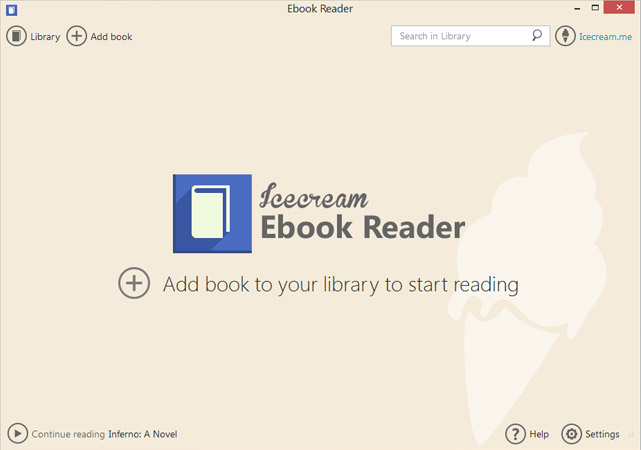Type: Shareware
Cost: $19.95
Size: 25.98 MB
Release date: May 20 2016
Platform: Win2000,WinXP,Win7 x32,Win7 x64,Windows 8,Windows 10,WinServer,WinOther,WinVista,WinVista x64
Publisher’s Site: http://icecreamapps.com/ Publisher’s Product Page: http://icecreamapps.com/Ebook-Reader/ Country: Cyprus

Icecream Ebook Reader is a simple yet effective application for building and organizing digital libraries and reading ebooks on PC. It supports books in such formats as EPUB, FB2, CBZ, CBR, MOBI and PDF. The program helps create ebook libraries and view a full list of books in Book Shelf or Table View modes. User can filter the contents by the offered categories that are recently read books, favorites, all books. Added ebooks can be also filtered by formats. Icecream Ebook Reader gives you a great reading experience thanks to special features: Full screen, Window, and Book modes, quick access to the table of contents and list of bookmarks, bookmarking tool, font size tools, and quick access to the profiles (Day, Night, and Sepia) depending on the time of the day and lighting conditions. Tracking of reading progress of each book is featured in this software as well – there are statuses and reading progress in percents that correspond to each ebook added to the Library.



